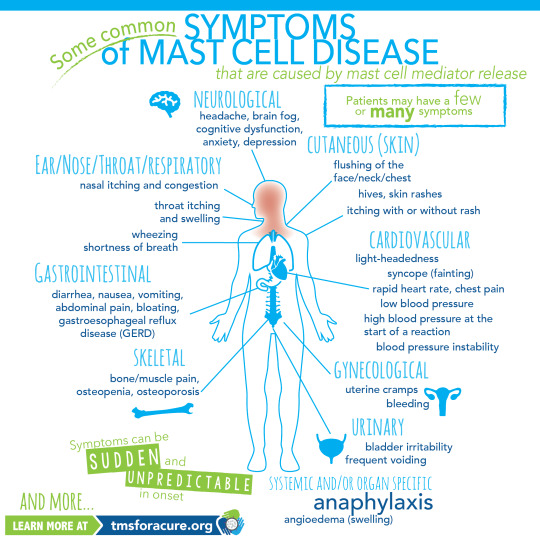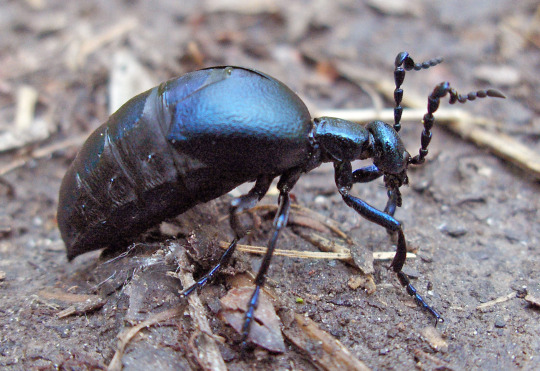#urticaria symptoms
Text
0 notes
Text
#urticaria#urticaria treatment#urticaria allergy#urticaria symptoms#urticaria treatment in hindi#acute urticaria#urticaria cause#urticaria means#urticaria causes#urticaria images#havis#chronic urticaria#urticaria medicine#how to cure urticaria#urticaria medicines#causes for urticaria#urticaria home remedies#urticaria home treatment#best treatment for urticaria#treatment of urticaria in hindi#best skin specialist for urticaria in delhi
0 notes
Text
ok, chronic hives homies. urticaria cuties. my weal-covered warriors. I come begging on my knees.
I have a doctors appointment with a new doctor tomorrow, and she hasn’t ordered an allergy test yet but based on past experience she is definitely going to (because apparently it’s so hard to believe that someone has hives that need treatment that aren’t caused by an allergen). Because of this, I’m avoiding antihistamines and other allergy meds (because when you go in for testing they don’t want you to take allergy meds for three days before the test). However, as I’m sure most of you understand, because of this I Am Itchy As Fuck And Cannot Sleep.
How do I get some sleep while also itching like a motherfucker and being unable to take meds for it? TIA
#personal#chronic hives#chronic urticaria#urticaria#hives#I’m so fucking itchy my dudes#itchy#skin condition#dermatology#allergy#MCAS#I don’t know if I have any of these things for real but I know this symptom overlaps with a lot of these things which is why I’m tagging#mast cell activation disorder
6 notes
·
View notes
Text
aikjshfihouaghhghghhh. its all horrible
#i think. my autoimmune condition is activating again.#its been so good for years now. i dont want the symptoms to come back#i hate it i'll be miserable every day. i dont want it i dont#noide.txt#i'll start making those traumacore edits but about urticaria#severe chronic urticaria
0 notes
Note
hello i thought you would appreciate the morbid humor my also not-an-allergy allergy. i have cold urticaria, which is where any exposure to cold temperatures on my skin make me break out in hives and in extremis go into anaphylactic shock. my mom is way worse, she's gone into shock just from getting in pools too early in summer.
ive had to argue with people that no i really am for real allergic to the cold. bro i will die. allergies that arent allergies are wild and such a pain to explain. "you cant be allergic to the cold" girl watch me aksdjhaksdhakjshd
Oh yeah! I have that too as part of my MCAS. Same with heat. Too hot I break out in hives. Too cold I break out in hives. A lot of “weird” symptoms that like are usually caused by over active mast cell activity in the skin.
The more you know!
420 notes
·
View notes
Text
Chronic Spontaneous Urticaria: What You Need to Know?
Chronic Spontaneous Urticaria: What You Need to Know?
Chronic Spontaneous Urticaria: What You Need to Know?
091e9c5e820faac4091e9c5e820faac4FED-Footermodule_FED-Footer_091e9c5e820faac4.xmlwbmd_pb_templatemodule0144002/02/2021 01:57:340HTML
.

View On WordPress
0 notes
Text
What is Idiopathic Mast Cell Activation Syndrome?
Idiopathic Mast cell activation syndrome (MCAS) is one of several mast cell disorders. MCAS occurs when there are a normal number of mast cells in a person's body but they over-release mast cell mediators causing random allergic reactions in multiple systems of the body. MCAS is incredibly common being present in an estimated 17% of the population.
Symptoms
MCAS symptoms are incredibly varied and always occur in multiple systems of the body. Anaphylaxis is common.

[ID: A graphic labeled "Some common symptoms of Mast Cell Disease" A graphic of a person standing in the center with multiple organs visible is shown. Around the person are lines pointing to specific areas of the body labeled with the body system and symptoms. Clockwise these read "Neurological headache, brain fog, cognitive dysfunction, anxiety, depression Cutaneous (Skin) flushing of the face/neck/chest, hives, skin rashes, itching with or without rash Cardiovascular light-heartedness, syncope (fainting), rapid heart rate, chest pain, low blood pressure, high blood pressure at the start of a reaction, blood pressure instability Gynecological uterine cramps, bleeding Urinary bladder irritability, frequent voiding Systemic and/or organ specific Anaphylaxis angioedema (swelling) Skeletal bone/muscle pain, osteopenia, osteoporosis Gastrointestinal diarrhea, nausea, vomiting, abdominal pain, bloating, gastroesophageal reflux disease (GERD) Ear/Nose/Throat/Respiratory nasal itching and congestion, throat itching and swelling, wheezing, shortness of breath and more" In the bottom left corner "Symptoms can be sudden and unpredictable in onset learn more at tmsforacure.org"]
MCAS symptoms are specifically not allergies. the reactions may look like allergies but the two are not the same and MCAS is not a condition meaning "many allergies" While MCAS can have some consistent triggers one of the defining features of the disease is that reactions are random and happen unpredictably.
Anaphylactic shock is not a requirement for diagnosis.
Diagnosis
MCAS is diagnosed by an immunologist. It is in part a diagnosis of exclusion and requires ruling out both allergies and systemic mastocytosis as well as other conditions such as certain types of tumors.
Diagnostic criteria for MCAS is debated. Some immunologists follow the symptom-based diagnosis approach in which case the diagnostic criteria are:
Recurring and severe anaphylactic-like episodes that involve more than one organ system
and
Positive response to mast cell stabilizing or mediator medications anaphylaxis-type symptoms
Others follow diagnostic criteria based on laboratory findings. In this case the diagnostic criteria are:
Episodic symptoms consistent with mast cell mediator release affecting two or more organ systems evidenced as follows:
Skin: urticaria, angioedema, flushing
Gastrointestinal: nausea, vomiting, diarrhea, abdominal cramping
Cardiovascular: hypotensive syncope or near syncope, tachycardia
Respiratory: wheezing
Naso-ocular: conjunctival injection, pruritus, nasal stuffiness
and
A decrease in the frequency or severity; or resolution of symptoms with anti-mediator therapy: H1 and H2 histamine receptor antagonists, anti-leukotriene medications (cysLT receptor blockers or 5-LO inhibitor), or mast cell stabilizers (cromolyn sodium)
and
Evidence of an elevation in a validated urinary or serum marker of mast cell activation: Documentation of elevation of the marker above the patient’s baseline during a symptomatic period on at least two occasions; or if baseline tryptase levels are persistently >15ng, documentation of elevation of the tryptase above baseline on one occasion. Total serum tryptase is recommended as the markers of choice; less specific (also from basophils) 24 hour urine histamine metabolites, or 11-beta-prostaglandin F2.
and
Primary (clonal) and secondary disorders of mast cell activation ruled out.
These are not all proposed diagnostic criteria as the subject is heavily debated. Generally, a laboratory-confirmed MCAS diagnosis is considered more legitimate.
Treatment
MCAS is a very treatable condition. Generally treatment follows a path from antihistamines -> mast cell mediators -> biologics.
Epipens are given to MCAS patients with a history of anaphylaxis.
Antihistamines are divided into 2 categories: H1 antagonists and H2 antagonists. These categories are determined based on the histamine receptor each one targets.
H1 antagonists mostly deal with systemic and cutaneous symptoms. H1 antagonists are also further divided into first and second generation antihistamines. first generation antihistamines include diphenhydramine (Benadryl) and Hydroxyzine. These tend to cause drowsiness. With second generation H1 antagonists cause fewer side effects and include drugs like loratadine (Claritin) and cetirizine (Zyrtec)
H2 antagonists primarily affect the gastrointestinal tract and include medications like famotidine (pepcid)
Typically when treating MCAS a person will be put on both a second generation H1 antagonist and an H2 antagonist.
When antihistamines do not treat symptoms well enough the next step is a mast cell mediator. The most common mast cell mediator is cromolyn sodium which is available by prescription only. (this is technically available OTC but it is at 1/50th the dose used for MCAS) Mast cell mediators work by preventing the degranulation of mast cells in the first place.
When both antihistamines and mast cell mediators are insufficient someone with MCAS might be prescribed a biologic such as Xolair to treat their remaining symptoms.
Sources:
American Academy of Allergy, Asthma, and Immunology
Mast Cell Hope
Mast Cell Activation Syndrome: Proposed Diagnostic Criteria
#mast cell activation syndrome#mcas#mast cell disease#mast cell activation disorder#mcad#chronic illness#chronically ill#physical disability#physically disabled
76 notes
·
View notes
Note
Hey, I was wondering if you get do some headcanons for the bois and tbb dating an s/o who has an allergy to the cold (cold urticaria)?
I did not know that was a thing! I wrote these to be inclusive of general cold sensitivity as well (since I am very familiar with that lol)

Jesse, Hardcase, and Wrecker are natural furnaces. Any time you need some heating up, they're happy to lend a hand... or, rather, their whole bodies. Snuggle up close and instantly enjoy their warmth. No matter how cold the air or severe your symptoms, they can always get your inner temperature back to a place of normalcy. The only downside comes in the summertime, when their snuggles unfortunately get to be too hot for comfort. You'll have to find a place to live that's suitable for you both.
Tup, Echo, and Crosshair are the opposite; they, too, struggle staying warm in the cold. But together, the two of you can come up with some strategies to handle it. They'll keep a close watch on the campfire, making sure it's always burning bright and warm. You'll pick up some extra socks and mittens for them at the store. Your shared bed is always piled high with thick blankets. And ultimately, you both just avoid colder environments wherever possible, never giving the other shit for your sensitivities.
Cody, Fox, and Hunter just have it baked into their routines now to check on the weather throughout the day. As soon as it gets even a little bit nippy outside, they're grabbing hold of your hands, turning up the thermostat, and ordering soup from the nearby cafe. All before you yourself have even registered how cold it is. They won't complain if you want to snuggle for warmth, or if you opt out of certain activities because you know it'll be too cold for you.
Wolffe, Dogma, and Tech would want a plan on how the two of you are going to live together. They don't necessarily run hot, but they aren't at your level of sensitivity when it comes to the cold. So they'll make sure you have your own separate blankets, however many you want, maybe even a nice heated one, and they can stick to their one sheet. They'll want to make any other arrangements right away, so you are still cared for without them having to be too uncomfortable themselves.
Rex, Kix, and Fives are accommodating as well, but also find your sensitivities kinda cute? Like they'll have to move yet another space heater out of the way when cleaning, or they'll see you wearing a coat and scarf to work in the summer because your office is always cold, or they'll watch you squeal in delight when it's finally warm enough to go barefoot outside... and they'll just get this nice mushy feeling in their chest. All of these things are so you, it makes them so happy.

Every Character Tag: @dangerousstrawberrypie, @justanothersadperson93, @arctrooper69, @sleepycreativewriter, @techie-bear, @theroguesully, @cw80831
Clone Bois & Bad Batch Tag: @kaijusplotch, @rebel-finn, @lucyysthings, @marvel-starwars-nerd, @nekotaetae, @severalseashellsbytheseashore, @lackofhonor, @flowered-bicycles, @foodmoneyandcats, @nahoney22, @dangraccoon
✨Join A Tag List Here!✨
💕 SW x SO Master List | 🌙 Master List of Master Lists
#star wars#the clone wars#the bad batch#clones#sw x so#cold#easily cold#cold urticaria#cold sensitivity#commander cody#commander wolffe#commander fox#captain rex#fives#jesse#kix#tup#hardcase#dogma#wrecker#echo#hunter#crosshair#tech
64 notes
·
View notes
Text
The 11 most venomous animals you can find in Germany
Ususlly you would think about exotic species when it comes to venomous animals, particularly species from Australia. Others are so common that they spontaneously don't come to our mind, such as bees, wasps, or hornets.
However, there are indeed venomous species that live in Germany, which can cause discomfort to severe pain, and – in rare cases – death.

Ammen-Dornfinger (Yellow Sac Spider), its fangs can penetrate the human skin and inject poison into the tissue. Symptoms are usually not worse than a bee sting, but can also cause nausea, vomiting, and shivers.

Gelbbauchunke (Yellow-Bellied Toad), the mucus contains a poison that is irritating to the skin and particulaly the mucosa and the eyes.

Petermännchen (Weeverfish), likes to bury itself in the ground near sandy beaches so that only the venomous spines stick out, causing a danger to the feet of tourusts. The symptoms include excruciating pain, swelling, redness, heat, neusea, vomiting, joint aches, headache, lightheadedness, increased urination, tremors, and in rare cases abnormal heart rhythm, seizures, gangrene, tissue degeneration, and unconciousness. This fish is considered the most dangerous venomous species that lives in Germany.

Spitzmäuse (Shrews) have venomous teeth. However, they rarely bite humans, and even more rarely have the power topenetrate the skin. They mostly use their venom to kill insects.

Kreuzotter (Common European Viper) are elusive animals, so very few peple have actually seen one. Their venom is three times more poisonous than that of the most dangerous rattlesnake. However, the viper doesn't like to waste its venom, that it also uses for hunting, for defense, and it has a much smaller reservoir. That's why the viper is only dangerous for small children and elderly people. Between 1959 and 2003, no viper-related deaths were recorded, and in 2004, an 81-year-old woman died. Victims often have to be hospitalized, about 10 % of them required ICU treatment. The symptoms include severe swelling, shortness of breath, and heart issues, in rere cases paralysis of the affected limb. On the other hand, numerous cases are known where the victims had no symptoms at all, probably because the viper didn't inject the venom.

Aspisviper (Aspic Viper) occurs only in the southern parts of the Black Forest and is very rare. The venom is similar to that of the common viper. It is expected to expand its territory in the future due to global warming.

Schwarzblauer Ölkäfer (European Oil Beetle) sprays a substance that is severely irritant to eyes and mucosa.

Eichen-Prozessionsspinner (Oak Processionary), hairs of the larvae easily break off and float through the air. They contain a venom that causes symptoms that reach from mild urticaria to severe dermatitis. If inhaled, the hairs can cause bronchitis, painful cough, and asthma.

Feuersalamander (Fire Salamander) has venom on the surface of the skin. In humans, it causes a slightly burning sensation on the skin, but it is absolutely deadly for dogs.

Gelbe Haarqualle / Feuerqualle (Lion's Mane Jellyfish): Touching this jellyfish causes excruciating pain, eczema, fever and breathing trouble.

Wasserspinne (Diving Bell Spider) can penetrate the human skin and inject venom. The effects are usually mild and not worse than a bee sting.
329 notes
·
View notes
Text
we've been sleeping like shit and now we have urticaria from the lingering stress of isaac having to take our symptoms and history seriously in order to compile.
Also barely being able to breathe 75% of the time even if i have no clue why *I* have to also feel it. Man.
I'll try to zone out enough to not feel it because i can't sit like this.
8 notes
·
View notes
Text
Update to our allergist/'throw a medication at it' post:
We had a follow up today, increasing the allegra we take but if it doesn't work by next week; We've 'failed the treatment' and will be perscribed a monthly injection called Xolair.
Only issue is: Xolair has a tiny chance to cause.. anaphalatic shock.
So we were perscribed an epipen to bring with us to every injection if we start it.
+ in the notes of our appointment, there was mention that our "symptoms and timeline match up with that of chronic spontanous urticaria"; which ig is our unofficial diagnosis, despite our hives having known triggers (cold, skin pressure, stress)
Also! We were told it looks like we could be getting scarring from these hives, which would be.. fuckin lovely.
yall i'm so tired.
#chronic illness#disability#physical disability#chronic disability#chronic pain#chronic hives#chronic urticaria
10 notes
·
View notes
Text
⎯⎯⎯⎯⎯⎯⎯⎯⎯⎯⎯⎯⎯⎯
THE CURSE
⎯⎯⎯⎯⎯⎯⎯⎯⎯⎯⎯⎯⎯⎯
"The Curse" is a seldom known and enigmatic condition where the infected individual begins sprouting hornlike growths all over their body, eventually disfiguring them into a mound of calcified flesh and bone. Only around 5 known people have been infected.
It is separated into 4 distinct stages.
⎯⎯⎯⎯⎯⎯⎯⎯⎯⎯⎯⎯⎯⎯
STAGES
⎯⎯⎯⎯⎯⎯⎯⎯⎯⎯⎯⎯⎯⎯
STAGE ONE
In the first stage, many of the symptoms can be easily mistaken as a flu or other common illness. It can also be mistaken as seasonal allergies or urticaria. This is the list of identified symptoms.
- Unexplained fever
- Ache or neuropathic itch
- Ache inside the muscle and bones
- A feeling of something underneath the skin
- In rare cases, avoidance of other people.
This stage can be referred to as the "false flu" stage.
STAGE TWO
After the first stage, symptoms usually progress 4-8 weeks later, however, it has been reported that it can be as little as 2 weeks. Small growths that have a similar shape of horns start to develop from underneath the skin, these growths typically appear on the face, neck, and shoulders. The growths are often darkly colored and can be easily overlooked by others. Usually, this stage is slightly painful but can be relieved through generic over-the-counter pain medication.
STAGE THREE
Soon after, the growths will begin spreading to other parts of the body, as well as continuing to increase in size. This is usually extremely painful as the growths are beginning to tear apart flesh and muscle, along with having a chance to puncture internal organs, break bones, and paralyze the infected. In some cases, the skin surrounding the growths can begin to mutate and resemble said growths. Infected individuals usually die in this stage due to cardiac arrest.
STAGE FOUR
If the infected individual hasn’t died yet, the curse will progress even more. The growth will spread to the rest of the body, likely completely paralyzing the infected. Because of this, it is hard for the infected to survive on their own due to not being able to eat, drink, or breathe. The growth may even spread to the hair, calcifying it too. Victims in this stage are unrecognizable and are often in a coma-like state.
There is a "Stage 5" which refers to the curse still taking over the body even after death.
⎯⎯⎯⎯⎯⎯⎯⎯⎯⎯⎯⎯⎯⎯
PROGNOSIS
⎯⎯⎯⎯⎯⎯⎯⎯⎯⎯⎯⎯⎯⎯
65% of victims die due to other causes(such as euthanasia, whether voluntarily or not.) while only 35% due to the curse itself.
⎯⎯⎯⎯⎯⎯⎯⎯⎯⎯⎯⎯⎯⎯
TREATMENT
⎯⎯⎯⎯⎯⎯⎯⎯⎯⎯⎯⎯⎯⎯
There isn’t any known treatment other than relieving symptoms via nitrous oxide for sedation and hydrocodone for pain.
⎯⎯⎯⎯⎯⎯⎯⎯⎯⎯⎯⎯⎯⎯
PREVENTION
⎯⎯⎯⎯⎯⎯⎯⎯⎯⎯⎯⎯⎯⎯
There isn’t any known ways to prevent it as the cause is unknown other than staying healthy and practicing good hygiene.
3 notes
·
View notes
Note
Hello there - I had a question which I think(?) you might be able to help with. Or at least point me in the direction of more information.
I have a few chronic illnesses and disabilities and as such there's many gremlins I deal with. One thing that crops up a lot are comorbidities between my conditions.
I'm trying to be more vigilant with regards to my health - as a child there were many, many missed opportunities to get my symptoms seen to by a doctor (all squandered due to my parents nor believing me about my symptoms).
Anyway, I wanted to ask about MCAS and if you know it's possible to have it but not realise it?
I've had a few incidents like this, but mostly forgot them or ignored them. But yesterday I ate some basil from my windowsill plant and I had what can only be described as an allergic reaction. I'm not allergic to any foods (as far as I know) but I've eaten from this exact plant before and been fine. I have mint growing next to it which I also ate and it caused the same reaction. Again, I've eaten from this exact plant before. It was like my mouth was burning or stinging and the leaves felt, spicy? In my mouth. I'm not sure how to describe it but I hope you know what I mean. Today I ate from the exact same plants and had no reaction whatsoever.
I've definitely had similar things happen before- but events like yesterday are few and far between. But utterly confounding when they do happen. I have urticaria (diagnosed since age 18) which I suspect is relevant, somehow.
I'm starting to wonder if a lot of my symptoms I've written off have actually been MCAS. But I'm not sure. Do you have any advice around talking to a doctor about this or if I have a leg to stand on so to speak?
Sending my best wishes!
Hey friend, sorry to hear you've been dealing with some neglect.
And considering MCAS was only really recognized as a condition in the last 15 years, it's absolutely possible to have it and not know until symptoms get worse. I was experiencing anaphylactoid reactions my whole childhood, but because I tested negative on IgE tests (I still do), it was dismissed as anxiety right up until I hit my 30s and I experienced my first episode of full-blown idiopathic anaphylaxis.
(Note: anaphylaxis is not a requirement for diagnosis, and not everyone experiences it.)
You should discuss your inconsistent allergies with your doctor or allergist. I would also advise pursuing allergen testing, as new allergens can develop at any time, even if you don't have mast cell instability.
If you suspect some form of mast cell instability may be the root cause of your issues, I'd suggest checking out The Mast Cell Disease Society. (Their website is in the process of being updated, still. But they have good resources there.)
Their signs and symptoms (and triggers) page has recently been updated and is fairly concise:
If any of that rings a bell, it might be worth bringing up with your allergist, but fair warning, not everyone is receptive to the idea of mast cell disorders outside of mastocytosis. (And even then some doctors gaslight their patients to hell and back.)
If you do find yourself in this situation, try joining a couple of support groups to see if there are any MCAS aware doctors in your area, or alternatively, try the TMS physician finder tool:
Sorry if it seems like I'm just throwing a lot of links at you, but they are very useful links and I'm not at my best right now to explain things.
I hope this is helpful and if I missed something, please let me know.
I wish you luck in remedying your chronic health issues <3
182 notes
·
View notes
Text
Y’know this Willow quote right?

There is a condition where you can experience allergic reactions to cold temperatures called Cold Urticaria
Ppl with this condition can experience swelling, redness and hives on skin that’s exposed to cold temperatures.

I also tried to look up if a burning occurs or can be felt, and from what I found, a burning sensation can happen after the reddening of the skins occurs.

The previous source I used is pretty old so I tried to find a more recent one. This one was written last year. It says that a burning feeling on the affected skin is a symptom of Cold Urticaria.
Based on Willow’s freezing quote, it may be possible that she has this condition.
I’m probably gonna make this a Willow hc AND NO ONE CAN STOP ME /lh
11 notes
·
View notes
Text
Histamine Intolerance Test | FMD
Unlocking Health: Understanding Histamine Imbalance and the Significance of Histamine Testing with First Medical Diagnostics
Introduction

The body naturally produces histamine, which is essential to many physiological functions. Histamine is a versatile chemical that may control immunological response & digestion. On the other hand, an imbalance in histamine levels can result in a variety of symptoms and medical problems. This article examines the effects of histamine imbalance and explains why getting a histamine test is an essential first step in gaining control over one's health.
The Role of Histamine:
Histamine functions as a neurotransmitter and is essential to the immune system. It helps the breakdown of food in the digestive tract by signaling the production of gastric acid. In addition, histamine helps the body react to allergens and controls blood vessel dilatation and sleep-wake cycles.
Impacts of Imbalanced Histamine:
When histamine levels become imbalanced, it can lead to histamine intolerance or sensitivity. This condition is characterized by the body's inability to break down histamine efficiently, resulting in an accumulation of this compound in the bloodstream. The impacts of imbalanced histamine can manifest in various ways, including gastrointestinal issues, headaches, skin reactions, and respiratory symptoms. Conditions such as chronic urticaria, migraines, and irritable bowel syndrome (IBS) are often associated with histamine intolerance.
Gastrointestinal Symptoms:
Imbalanced histamine levels can contribute to digestive problems such as bloating, abdominal pain, diarrhea, and constipation. The digestive tract is highly sensitive to histamine, and its dysregulation can disrupt the normal functioning of the gut.
Skin Reactions:
Histamine is a potent vasodilator, meaning it can widen blood vessels. This can lead to skin reactions like hives, itching, and redness. Individuals with histamine intolerance may experience persistent skin issues that can significantly impact their quality of life.
Respiratory Symptoms:
Histamine's role in regulating blood vessel dilation extends to the respiratory system. Imbalanced histamine levels can contribute to symptoms like nasal congestion, sneezing, and difficulty breathing, particularly in individuals with asthma or allergies.
Migraines and Headaches:
Histamine has been implicated in the development of migraines and headaches. Imbalanced histamine levels can trigger these conditions in susceptible individuals, making it essential to address histamine regulation for effective management.
The Importance of Histamine Testing:
Given the diverse range of symptoms associated with imbalanced histamine, accurate diagnosis becomes crucial for effective management. A histamine test can provide valuable insights into an individual's histamine levels, helping healthcare professionals tailor interventions and treatment plans accordingly.
Personalized Treatment Approaches:
Histamine testing allows for a personalized approach to managing histamine intolerance. By understanding an individual's specific histamine levels, healthcare providers can recommend dietary adjustments, lifestyle modifications, and, in some cases, supplementation with diamine oxidase (DAO), an enzyme responsible for breaking down histamine.
Preventative Health Measures:
For individuals experiencing chronic symptoms that align with histamine intolerance, a histamine test can serve as a preventive health measure. Early detection of imbalances allows for proactive management, reducing the risk of complications and improving overall well-being.
Get Your Histamine Intolerance Test From First Medical Diagnostics
The Histamine Sensitivity Test from First Medical Diagnostics will help you find relief from histamine-related illnesses. Find the source of symptoms such as skin sensitivities, stomach troubles, and headaches. Our accurate test determines your histamine levels and offers customized management suggestions. First Medical Diagnostics is your partner in comprehending and treating histamine sensitivity.
For more information,
Call us at +91 8800929600
Visit us at www.fmdindia.in
#histamine#fmdindia#histamineintolerance#health#wellness#fever#allergy#winterdiseases#sneezing#runningnose
2 notes
·
View notes
Text
hey, can anyone with fibromyalgia explain what it feels like to you? and/or how you realized you might have it? my grandma has fibro and im wondering if i do too...
i know i have chronic pain and exhaustion, mild joint problems, and very sensitive(?) skin. i have symptoms of cold urticaria (cold temperatures cause painful itchy red swelling, and a swollen throat that makes it painful or difficult to breathe) and i dont know if that might be related? im sensitive to temperatures in general, i think. heat drives me crazy and cold is physically painful.
i always attributed this to autism, but sometimes my clothes hurt. sheets too. like my skin is rubbed raw, except it isnt, i didnt do anything to cause that. i try to put up with it but sometimes i have to undress, or wear nothing but boxers and a very loose smooth shirt. it burns, it feels almost like a sunburn or something? i dont know, hard to describe.
i also get brief stabbing pains sometimes--not in my bones or muscles, like, skin-level. i can recognize bone or muscle pain (i have both, im double-jointed so my ribs and jaw pop out of place and it hurts, and i have a muscular injury that causes chronic pain). sometimes it keeps me from sleeping and thats the worst! (oh, and i have insomnia in general T-T)
the injury that caused my back pain was several years ago and didnt seem that serious at the time, and i have to wonder if its just that injury or if there are other factors.
i also have brain fog and ive heard that that can go hand in hand with fibro?
and with my fatigue, i can sleep 16 hours and still feel fucking exhausted. or 2 hours. still exhausted. 9 hours? exhausted. doesnt matter.
thats all i can think of right now but i can answer questions
i plan to talk to my doctor about this too, of course, but i want to hear from real people who actually have fibro as well
3 notes
·
View notes